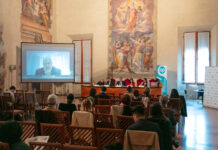The year 2021 ended in Colombia with a tragic toll of assassinations, including trade union representatives, indigenous leaders and former guerrilla fighters who laid down their arms: 97 massacres with 335 victims and with the assassination of 171 social leaders, human rights defenders and former Farc fighters who signed the 2016 peace agreement. 2022 also began under the same sign: the Instituto de Estudios para el Desarrollo y la Paz (Indepaz) denounced a massacre in the southern department of Nariño that took place on 9 January. Indepaz had already presented a summary of the victims of acts of violence that occurred in the first week of January 2022: 27 people killed (including two women, two minors and four Venezuelan citizens).
Following a peace deal between the Colombian government of President Juan Manuel Santos and the revolutionary armed forces of Colombia (FARC) in 2016, the path towards de-escalation and disarmament has proved particularly complicated and difficult to accomplish. Since the deal was signed, former guerrilla fighters, who had laid down their arms and returned to civilian life, were killed. In almost all cases, the crimes were left unpunished without identifying the real culprits. But it is well known that those responsible for such criminal acts belong to a network of paramilitary forces or organized crime gangs, often indistinguishable from one another.
Mario Paciolla, a UN Italian volunteer, was also a victim of this bloody but latent conflict. Paciolla was involved in UN peacekeeping operations in an area that had been plagued by violence following disarmament. He was found dead in his room, in San Vicente del Caguòn, on the eve of his departure for Italy, on 15 July 2020. Authorities attributed his death to suicide, but the official version seemed immediately improbable. A more likely explanation is the hypothesis that the UN volunteer was killed to prevent him from reporting what he had seen during his missions: presumably, a connivance between criminal gangs and government officials.
Despite the peace agreements, rural areas are still affected by violence, as are some urban areas. Many EU leaders have fallen victim to defending their territory against illicit drug trafficking and illegal deforestation. Since 2019 Bogota, Medellin, Cali and other Colombian cities have seen a wave of protests against social inequality and violence in rural communities. After the dramatic impact of the Covid-19 pandemic in 2020, protests were triggered by a tax-reform bill proposed by President Ivan Duque that would have also impacted the impoverished middle class. After a general strike on 28 April, Duque withdrew his proposal, but protests continued throughout the month of May. The Committee has demanded basic reforms (a guaranteed minimum basic income, health care and education) to reduce the gap that separates the masses from the ruling elite.
In June, 43 people died, although NGO s claim the true figure was closer to 60. The epicentre of the clashes was Cali, where the increase in poverty has been three times higher than the national average in 2020. President Duque sent in the army during a second, national general strike on 28 May.
On the external front, 1.3 million refugees have fled from Venezuela. The result of this is a situation of low-intensity conflict between actors from both States, be them dissident guerrillas or paramilitary militias.























